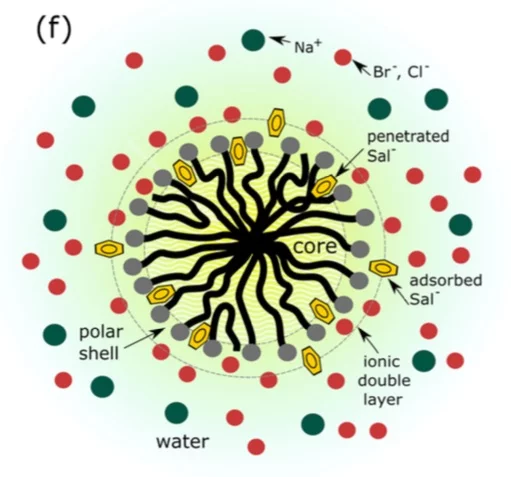Viscoelasticity Enhancement of Surfactant Solutions Depends on Molecular Conformation:
During the anisotropic growth from globular to wormlike micelles, the basic interactions among distinct parts of the surfactant monomer, its counterion, and additives are fundamental to tune molecular self-assembly. We investigate the addition of sodium salicylate (NaSal) to hexadecyltrimethylammonium chloride and bromide (CTAC and CTAB), 1-hexadecylpyridinium chloride and bromide (CPyCl and CPyBr), and benzyldimethylhexadecylammonium chloride (BDMC), which have the same hydrophobic tail. Their potential to enhance viscoelasticity by anisotropic micellar growth upon salt addition was compared in terms of (i) the influence of the headgroup structure, and (ii) the influence of surfactant counterion type. Employing proton nuclear magnetic resonance (1H NMR), we focused on the molecular conformation of surfactant monomers in the core and polar shell regions of the micelles and their interactions with increasing concentration of NaSal. The viscoelastic response was investigated by rotational and oscillatory rheology. We show that micellar growth rates can be tuned by varying the flexibility and size of the surfactant headgroup as well as the dissociation degree of the surfactant counterion, which directly influences the strength of headgroup−counterion pairing. As a consequence, the morphological transitions depend directly on charge neutralization by electrostatic screening. For example, the amount of salt necessary to start the rodlike-to-wormlike micelle growth depends directly on the number of dissociated counterions in the polar shell.


